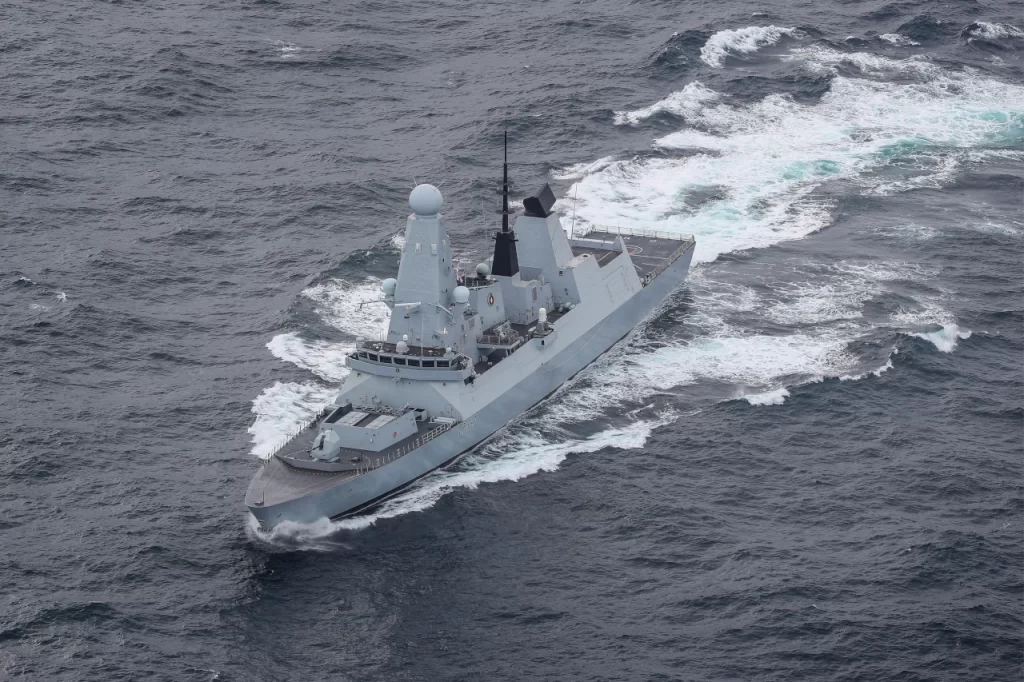The Sea Viper Air Defence system deployed on ships of the Royal Navy will be upgraded with missiles equipped with a new warhead and software to counter ballistic missile threats, according to a statement from the United Kingdom’s Ministry of Defence.
According to the Ministry of Defence, the Sea Viper Evolution (SVE) contracts were granted to the British division of MBDA, a missile joint venture controlled by Airbus, BAE Systems, and Leonardo.
Sea Viper was the preferred weapon of the Navy in the first successful shootdown of an aerial threat in over three decades, placing it at the forefront of this effort, added the MoD statement
The move comes after the Houthis attacked Royal Navy ships using drones on January 10.
The Red Sea connects the Middle East and Asia to Europe via the Suez Canal and the narrow Bab-el-Mandeb Strait. This waterway carries approximately 10% of all global seaborne oil transportation. Yemen lies on the Red Sea, Arabian Sea, and Gulf of Aden coasts. The Houthis, a hardline Shiite Muslim faction, took power in Yemen in 2014-15.
The Houthi movement in Yemen, Ansar Allah, has been attacking commercial ships in the Red Sea since the end of October, alleging to be assisting the Gaza Strip. The campaign promises to target only carriers affiliated with Israel.

According to the US, the crisis disrupted 20% of global maritime transport and impacted the interests of more than 40 countries. The US does not consider it to be a solely regional issue. It raises expenses, which are then passed on to consumers worldwide, noted the US Secretary of State Antony Blinken.
On December 18, the United States and 20 other countries launched Operation “Prosperity Guardian” to preserve navigation in the Red Sea. Some parties dispatched military ships, while others restricted themselves to deploying military headquarters and sharing information.
Until the ceasefire in the Palestinian enclave is restored, Houthi vessels will be prohibited from traversing the Red Sea and the Bab-el-Mandeb Strait. Based on estimates provided by the US Central Command, the Houthis have engaged in over 26 attacks against civilian and military vessels in the Red Sea since November 19, 2023.
On December 16, 2023, Britain’s defence ministry revealed images of a suspected attack drone downed by the military ship HMS Diamond in the Red Sea. According to British Defence Minister Grant Shapps, HMS Diamond fired down a drone targeting merchant vessels in the Red Sea.
On December 19, the ministry announced that HMS Diamond would join a United States-led international team to protect regional commerce.
On January 10, Minister Grant Shapps said that HMS Diamond, along with US vessels, successfully repelled the greatest onslaught by Iranian-backed Houthis in the Red Sea to date. The incident happened on the evening of January 9.

British and American warships in the Red Sea successfully intercepted and destroyed 18 drones and three missiles used in an attack by Iran-backed Houthi rebels. The US said that the complex strike included drones armed with bombs, anti-ship cruise missiles, and one anti-ship ballistic missile. HMS Diamond, USS Dwight D. Eisenhower (CVN 69), USS Gravely (DDG 107), USS Laboon (DDG 58), and USS Mason (DDG 87) all contributed to the concerted attempt.
HMS Diamond’s deck-mounted anti-aircraft gun shot down targets at close range for the first time. The DS-30B 30mm calibre gun can fire up to 650 rounds per minute and engage fast-moving aerial targets from up to 2.7 km range. Furthermore, the destroyer deployed “Sea Viper” missiles for at least the second time.
The UK Defence Minister described the strike by Iran-backed Houthis as the largest in the Red Sea to date, and he believes the rebels deliberately targeted HMS Diamond.
The Type 45 Destroyers, also known as Daring-class destroyers, are built specifically around the Sea Viper air defence system. Each Type 45 destroyer has a 48-cell A50 Sylver Vertical Launch System. This system can accommodate up to 48 Aster 15 and Aster 30 missiles.
Sea Viper, formally known as the Principal Anti-Air Missile System (PAAMS), was developed in collaboration with France, Italy, and the United Kingdom.
The Sea Viper Missile system employs the Aster 15 and Aster 30 missiles, noted for their precision and long-range capabilities. The SAMPSON Multi-Function Radar is an essential component of the PAAMS(S) version, providing superior target tracking and engagement capabilities. The Sylver Vertical Launching System enables rapid and adaptable missile deployment, critical for responding to fast-moving airborne threats. Finally, the S1850M Long-Range Radar enables early warning and tracking prospective threats across extended distances.
Aster 15 weighs 310 kilograms, measures 4.2 metres in length, and has a diameter of 180 mm. It carries a 15-kilogram targeted fragmentation warhead with a deadly radius of 2 metres. The missile has a solid propellant, a two-stage engine, and a flight altitude of 13 km, allowing it to attain Mach 3.
Aster 30 is significantly larger. It weighs 450 kg and measures 4.9 metres while maintaining the same diameter as Aster 15. It has an operational range of over 120 km and 150 km for the Block 1 NT variant, a flight height of 20 km, and maximum speeds of Mach 4.5.
Both types employ an inertial guidance system with an uplink and an active RF seeker to ensure precise target acquisition and engagement. Their design enables excellent agility and precision, making them extremely effective against high-performance air threats.
